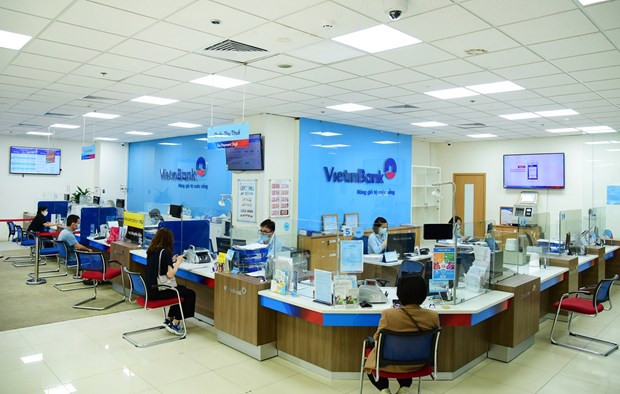This is a sea change for Vietnam, where the reliance is heavy onphysical interaction for most financial transactions.
“Technology has been benefiting banks by promoting process automation,improving productivity, increasing customer experience, and reducingoperational costs,” said Nguyen Quoc Hung, Secretary-General of the VietnamBanks Association (VBA).
“There is a heated race towards digital banking going on in Vietnam,with banking services having found their way into every corner of life,” headded.
This process has received a fillip during the pandemic, with peopleforced to minimize direct contact with each other. And this is markedly evidentin banking and payments, critical pillars of the economy, which haveexperienced a remarkable revolution in digital offerings and adoption.
With a tech-savvy young population and relatively high smartphonepenetration rate, Vietnam has seen a surge in digital payment volumes, fromonline marketplaces, bill payment services, retail outlets, to smallconvenience stores, and even vegetable and fruit vendors.
“I used to use cash and nothing else for grocery shopping,” Lan, a 30s officeworker living in Hanoi, told Vietnam News Agency, “but the pandemic has changedthe way I shop."
 “I used to use cash and nothing else for grocery shopping,” Lan, a 30s office worker living in Hanoi, told Vietnam News Agency. (Photo: VNA)
“I used to use cash and nothing else for grocery shopping,” Lan, a 30s office worker living in Hanoi, told Vietnam News Agency. (Photo: VNA)Around 85 percent of Vietnamese banking consumers are more likely to useonline and digital banking services compared to a year and a half ago,according to a report by SaaS cloud banking platform Mambu.
The report reveals that globally, nearly 61 percent of consumers havemade greater use of digital banking services and 41 percent have started using themfor the very first time because of the pandemic. In Vietnam, these numbers arehigher, at 70 percent and 54 percent respectively.
“I find almost everything I need in my banking app,” Lan added. “It isno longer just for money transfer; now I can pay bills, top-up phone credits,book flights and do other things with the app.”
About 95 percent of lenders in Vietnam have been pushing a digitaltransformation strategy, Deputy Governor of the State Bank of Vietnam (SBV)Pham Tien Dung remarked at a conference on smart banking last month.
To date, nearly 80 banks offer internet banking solutions and mobilebanking services are available at 44 banks. The country has 45 intermediarypayment services providers, over 90,000 QR code payment terminals and close to298,000 point-of-sale (POS) terminals in place, Dung said.
“Digital banking in Vietnam is pretty good,” said Med, aMoroccan-Canadian who has been living in Vietnam for five years.
“You can actually withdraw with your phone. Like you don’t need to havean ATM card, you can just take your phone to the ATM and withdraw,” he said.“When I got here, that option was not there.”
Over 90 percent of transactions in many banks are currently conductedvia digital channels, central bank data shows. In the first nine months of2021, payments via mobile banking soared 76.2 percent in volume and 88.3percent in value compared to a year earlier. The corresponding figures were51.2 percent and 29.1 percent for payments via Internet banking.
“So we can safely say that digital transformation in the sector has beenmaking huge strides at the time of COVID-19,” SBV Deputy Governor Dung said,adding that the key point of this was the formation of a digital paymentecosystem, with digital banking solutions integrated into other services of theeconomy. It allowed users to enjoy seamless experiences across different areasin the digital space, he noted.
Partnerships for a cashless society
In this scenario, the collaboration between banks and fintech firms isevolving, driven by not only increasing customer adoption but also regulatorydevelopments.
The number of fintech companies in Vietnam has almost quadrupled overthe last five years, from just about 40 in 2016 to over 150 in 2021, accordingto the SBV. The fintech landscape in the country is currently dominated bypayment firms, which account for 24 percent of the total population, followedby peer-to-peer lending (16 percent) and blockchain, crypto and remittances (14percent).
This year, 375 million USD in funding was poured into Vietnamese fintechstartups, the third largest in Southeast Asia, after Singapore and Indonesia, accordingto the Fintech in ASEAN 2021 report.
As many as 72 percent of fintech firms in Vietnam have opted tocooperate with banks instead of entering into direct competition, according toa 2018 analysis by the SBV.
“Fintechs and banks are working together in a way that surely benefitsboth parties and the society also,” said Vietcombank Chairman Pham Quang Dung.
VNPay, one of Vietnam’s tech unicorns and largest digital paymentsolution providers, is among the most successful stories of a fintech firmpartnering with banks to leverage the latter’s extensive customer bases.
 Despite having its own mobile platform, a majority of VNPay transactions are done through the QR feature incorporated into its 40 partner banks’ mobile apps. (Photo: VietnamPlus)
Despite having its own mobile platform, a majority of VNPay transactions are done through the QR feature incorporated into its 40 partner banks’ mobile apps. (Photo: VietnamPlus)“Bank-fintech cooperation is an inevitable trend,” Vietcombank’s Dungemphasised, adding that many Vietnamese banks were also actively seekingsuitable partnerships with fintechs.
Welcoming this development, VBA Secretary-General Hung said Vietnameselenders should collaborate with fintech firms to develop a shared ecosystem sothey can take advantage of each other’s strengths to improve customers’experience.
CIMB Vietnam, a subsidiary of CIMB Group, an ASEAN banking venture, launchedits digital banking offerings back in 2018. It embraced the partnershipstrategy early on, teaming up with several fintechs, including the Republic ofKorea’s unicorn Toss, EzQ-owned social commerce platform ON and e-walletSmartPay, to provide users with value-added services.
In October, CIMB Bank and fintech startup Finhay released a co-brandeddebit card, Vietnam’s first-ever 3-in-1 bank account that can be opened andmaintained straight from the Finhay app with the help of eKYC (electronicKnow-Your-Customer), a digital solution for remote customer identification andverification.
The Vietnamese government has been encouraging the adoption of advancedtechnologies by introducing a number of regulations to guide the banking andfinancial services sectors.
In March 2017, the SBV established the Steering Committee on FinancialTechnology, a body dedicated to building an enabling regulatory framework forthe development of the fintech ecosystem and creating opportunities for localfintech companies.
Deputy Prime Minister Le Minh Khai has approved a five-year(2021-25) project for the development of cashless payments. The project aims toaccelerate the growth of cashless payments with improved security, safety, andconfidentiality while making it more accessible to both urban residents andthose living in rural, remote and mountainous areas.
Among the project targets are: the value ofnon-cash payments becoming 25 times higher than the GDP; and the proportion ofthe payment method in e-commerce accounting for 50 percent by 2025.Additionally, 80 percent of people aged 15 will have bank accounts, while thenumber of points accepting cashless payments will increase to over450,000.
Deputy PM Khai said at a recent conference that digital transformationtowards a cashless society is an inevitable and growing trend in the era ofthe Fourth Industrial Revolution. Citing the two birds with one stone adage, hesaid a cashless society will not only help Vietnam boost economic recovery butalso realise the goal of financial inclusion.
What’s next?
Digital transformation in the banking system still faces some barriers,said VietinBank Deputy General Director Tran Cong Quynh Lan. One of them is alack of uniformity in the legal mechanism supporting this process. Lan mentionedthe remote opening of a bank account as an example, saying eKYC can be used forcustomer verification but users were still required to visit physical branchesin person for a digital signature to be granted.
 A VietinBank office in Hanoi. One of the barriers hampering the digital transformation in banking is a lack of uniformity in the legal mechanism supporting this process. (Photo: VNA)
A VietinBank office in Hanoi. One of the barriers hampering the digital transformation in banking is a lack of uniformity in the legal mechanism supporting this process. (Photo: VNA)To go digital successfully, Vietnamese banks must not only develop adigital ecosystem of their own but also act together to build one for theentire industry, said Pham Anh Tuan, Vietcombank board member and Director ofBanking and Technology Modernisation.
“It is very critical because a common ecosystem will allow banks toshare data and information; particularly if it is connected with ministries,governmental agencies and other sectors, risks can be reduced.”
Furthermore, the current legal environment is not keeping up with thepace of digital transformation in banking, hampering the development of newfinancial services, VBA Secretary-General Hung said, calling for a comprehensivemakeover of the regulatory framework.
Recognising such problems, the government ispushing for a regulatory sandbox for fintech in the banking industry that willmake it possible for credit institutions, fintech solutions providers and otherinnovators to directly test products and services in a closely-controlledenvironment supervised by relevant state bodies.
Regulators should develop the sandbox based on thefollowing principles - encouraging innovation, increasing financial accessibility,protecting rights of borrowers and investors, keeping risks within anacceptable level and promoting financial literacy, suggested Pham Xuan Hoe,former Deputy Director of the Banking Strategy Institute.
The central bank is also building a regulatoryframework for the application of fintech enablers, or key Industry 4.0technologies like eKYC, Open API, big data, artificial intelligence, blockchainand cloud computing./.
Related story:Digital transformation goes mainstream in Vietnam




























